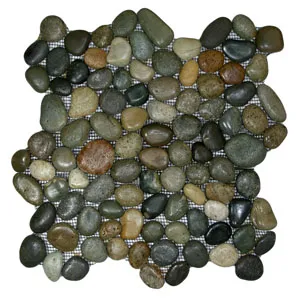The Versatility and Elegance of Glazed Floor Tiles: A Comprehensive Guide
Pebble Tiles Shop . Follow
2 months ago
When it comes to choosing flooring options that combine beauty, durability, and functionality, glazed floor tiles stand out as a superior choice. These tiles, characterized by their glass-like coating, offer a blend of aesthetic appeal and practical benefits that make them a popular choice for a variety of settings. In this comprehensive guide, we’ll explore the advantages of glazed floor tiles, their applications, and key considerations to help you make an informed decision for your next flooring project.
What Are Glazed Floor Tiles?
Glazed floor tiles are tiles that have been coated with a layer of glaze—a liquid glass mixture that is applied and then fired at high temperatures. This glaze not only enhances the tile’s appearance but also provides a protective barrier against moisture, stains, and everyday wear and tear. The result is a tile that is both visually striking and highly functional.

Benefits of Glazed Floor Tiles
-
Durability and Longevity
One of the primary benefits of glazed floor tiles is their durability. The glazing process creates a hard, non-porous surface that can withstand heavy foot traffic, impacts, and scratches. This makes glazed floor tiles an excellent choice for both residential and commercial environments where durability is a key concern.
-
Easy Maintenance
Glazed floor tiles are incredibly easy to maintain. The glossy surface repels dirt and grime, making routine cleaning a breeze. A simple sweep and mop are usually sufficient to keep these tiles looking their best. Additionally, the non-porous nature of the glaze means that stains are less likely to penetrate the tile, further simplifying upkeep.
-
Aesthetic Appeal
With a wide range of colors, patterns, and finishes available, glazed floor tiles can enhance the aesthetic appeal of any space. Whether you’re looking for a classic look with traditional ceramic tiles or a modern design with sleek porcelain options, there is a glazed tile to suit every taste. The reflective surface of glazed tiles also helps to brighten up a room by reflecting light, creating a more spacious and airy feel.
-
Moisture Resistance
The glazing process makes these tiles highly resistant to moisture, making them ideal for areas prone to spills and dampness, such as kitchens and bathrooms. The protective layer prevents water from seeping into the tile and causing damage, thereby extending the life of the flooring and reducing the risk of mold and mildew growth.
-
Versatility
Glazed floor tiles are incredibly versatile and can be used in various applications. From stylish living rooms and elegant dining areas to practical kitchen floors and luxurious bathrooms, glazed tiles offer a wide range of options to suit different design needs. They can also be used in commercial settings, including retail spaces, offices, and hospitality environments.
Types of Glazed Floor Tiles
-
Ceramic Glazed Tiles
Ceramic glazed tiles are made from clay that is fired at high temperatures. They are available in numerous designs, including patterned, textured, and solid colors. Ceramic tiles are known for their affordability and versatility, making them a popular choice for residential applications.
-
Porcelain Glazed Tiles
Porcelain glazed tiles are made from a finer clay and fired at higher temperatures than ceramic tiles. This results in a denser and more durable tile that is suitable for high-traffic areas and commercial spaces. Porcelain tiles are also less porous and more resistant to moisture compared to ceramic tiles.
-
Glass Glazed Tiles
Glass glazed tiles feature a translucent glaze that can create a stunning visual effect. These tiles are often used as accents or in mosaic patterns to add a touch of luxury and elegance to a space. Glass glazed tiles are particularly popular in modern and contemporary designs.
Installation Considerations
-
Subfloor Preparation
Proper subfloor preparation is crucial for the successful installation of glazed floor tiles. The surface should be clean, dry, and level to ensure that the tiles adhere properly and provide a stable foundation. Any imperfections in the subfloor can affect the appearance and longevity of the finished flooring.
-
Tile Layout
Plan the tile layout carefully to ensure that the finished floor looks professional and aesthetically pleasing. Consider using a chalk line or grid system to guide the placement of the tiles. For larger spaces, you may also want to use a tile cutter or wet saw to ensure precise cuts and a clean finish.
-
Grouting and Sealing
Once the tiles are installed, grouting is necessary to fill the gaps between them and provide a finished look. Choose a grout color that complements the tiles and consider using a grout sealer to enhance the tile’s resistance to stains and moisture.
Conclusion
Floor Glazed Tiles offer a perfect blend of durability, ease of maintenance, and visual appeal. Whether you’re renovating your home or designing a commercial space, these tiles provide a versatile and stylish flooring option that can meet a variety of needs. By understanding the benefits, types, and installation considerations associated with glazed floor tiles, you can make an informed decision and enjoy the long-lasting advantages they offer.
Recommended topics
Recommended from Guest Post
shana adams
Greenlighting Excellence: Navigating Triumph with ISO 14001 Certification
March 11, 2024Stylistic Design Studio & Shop
Motion Graphics in London How to Find the Best Studios
April 18, 2024WordPress Website Development Company

